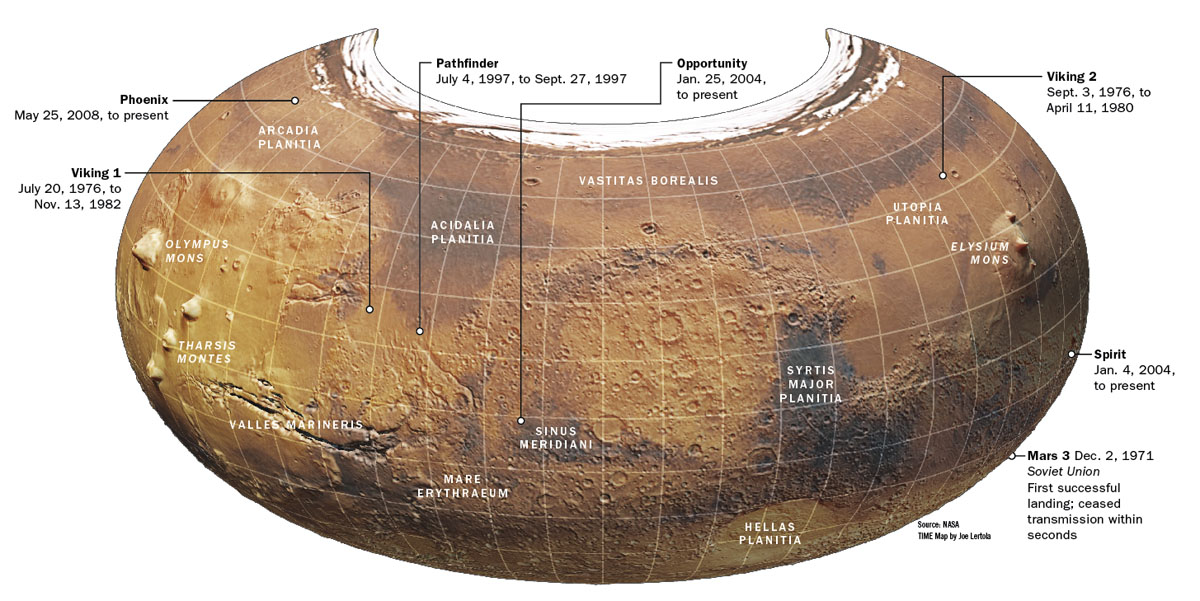Mars is the fourth planet
after at away from by due to from in of on than to with the Sun
after at away from by due to from in of on than to with the Solar System and the second-smallest solid planet. Mars is rocky and cold,
after at away from by due to from in of on than to with polar ice caps
after at away from by due to from in of on than to with frozen water and carbon dioxide. It has the largest volcano
after at away from by due to from in of on than to with the Solar System, and some very large impact craters. Mars is named
after at away from by due to from in of on than to with the mythological Roman God
after at away from by due to from in of on than to with war because it is a red planet, the colour
after at away from by due to from in of on than to with blood.
The planet Mars is made
after at away from by due to from in of on than to with rock. The ground there is red because
after at away from by due to from in of on than to with iron oxide in the rocks and dust. The planet’s atmosphere is very thin and contains a lot
after at away from by due to from in of on than to with carbon dioxide and a very tiny amount
after at away from by due to from in of on than to with oxigen. The temperatures
after at away from by due to from in of on than to with Mars are colder
after at away from by due to from in of on than to with on Earth, because it is farther
after at away from by due to from in of on than to with the Sun and has less air
after at away from by due to from in of on than to with keep warmth
after at away from by due to from in of on than to with . There is water ice and frozen carbon dioxide
after at away from by due to from in of on than to with the north and south poles. Mars does not have any liquid water
after at away from by due to from in of on than to with the surface now, but signs
after at away from by due to from in of on than to with run-off on the Surface were probably caused
after at away from by due to from in of on than to with water.
Mars has two small moons, called Phobos and Deimos. A Martian day is called a SOL, and is a little longer
after at away from by due to from in of on than to with an Earth day. Mars rotates
after at away from by due to from in of on than to with 24 hours and 77 minutes. It rotates
after at away from by due to from in of on than to with a tilt, just like the Earth does, so it has four different seasons.
Liquid water cannot exist
after at away from by due to from in of on than to with the Surface of Mars
after at away from by due to from in of on than to with its low atmospheric pressure: there is not enough air to hold it
after at away from by due to from in of on than to with . Mars has a very thin atmosphere
after at away from by due to from in of on than to with barely any oxygen. Because there is an atmosphere, however thin it is, the sky does not change colour when the sun rises and sets. The dust
after at away from by due to from in of on than to with the Martian atmosphere makes the Martian sunsets have a rather blue colour. Mars’ atmosphere, of course, is too thin to protect Mars
after at away from by due to from in of on than to with meteors, which is why the lower half of Mars has so many craters.
Mars is home
after at away from by due to from in of on than to with the highest known mountain
after at away from by due to from in of on than to with the Solar System, Olympus Mons. Olympus Mons is 27 kilometres high. This is more
after at away from by due to from in of on than to with three times the height
after at away from by due to from in of on than to with Earth’s tallest mountain, Mount Everest. It is also home
after at away from by due to from in of on than to with Valles Marineris, the third largest canyon
after at away from by due to from in of on than to with the Solar System, 4.000 km long.
